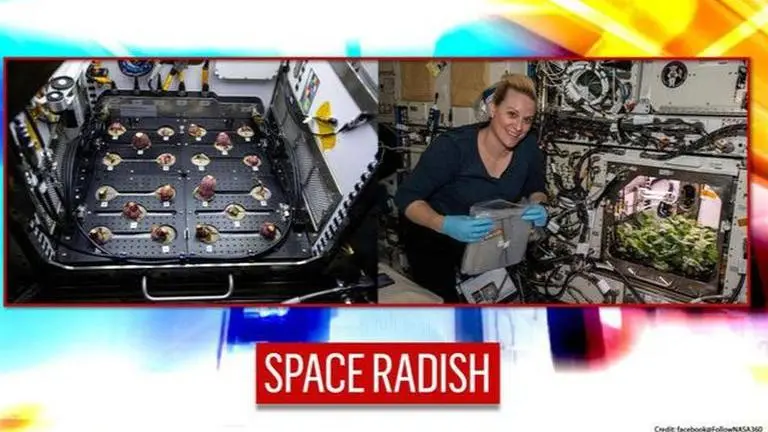Updated 6 December 2020 at 14:22 IST
NASA astronaut harvests 20 radishes aboard International Space Station, makes history
Months after a NASA astronaut grew red lettuce aboard the International Space Station, another astronaut has now harvested radishes in microgravity
- Science News
- 2 min read

Months after a NASA astronaut grew red lettuce aboard the International Space Station, another astronaut has now harvested radish in microgravity. As a part of a plant experiment called Plant Habitat-02 (PH-02), astronaut Kate Rubins created history by harvesting 20 radish plants in the ISS Advanced Plant Habitat. All the plants have now been placed in cold storage to be returned to earth along with the space mission in 2021.
As per a press release by NASA’s John F. Kennedy Space Center, the harvest marks the first time that NASA has grown radishes on the orbiting laboratory. Stating reasons behind selecting radishes for the experiment, the American space agency stressed that the vegetable is “well understood by scientists” and reach maturity in mere 27 days. Another added advantage of radishes is that besides being highly nutritious, radishes also require low maintenance by the crew.
Advertisement
“Radishes are a different kind of crop compared to leafy greens that astronauts previously grew on the space station, or dwarf wheat which was the first crop grown in the APH,” said Nicole Dufour, NASA APH program manager at Kennedy Space Center. “Growing a range of crops helps us determine which plants thrive in microgravity and offer the best variety and nutritional balance for astronauts on long-duration missions.” the release stated.
'The plants were monitored'
Unlike previous experiments wherein plants were cultivated in porous soil with fertilizers, astronauts provided the radish plant with precisely defined quantities of minerals.” Such precision allows for a better comparison of nutrients provided to and absorbed by the plants,” NASA said. In addendum, the radish plants were also provided with red, blue, green and broad-spectrum white LED lights to stimulate growth. The plants were regularly monitored by astronauts who also regulated moisture levels, temperatures, carbon dioxide concentration in the growth cabin.
Advertisement
Published By : Riya Baibhawi
Published On: 6 December 2020 at 14:22 IST
